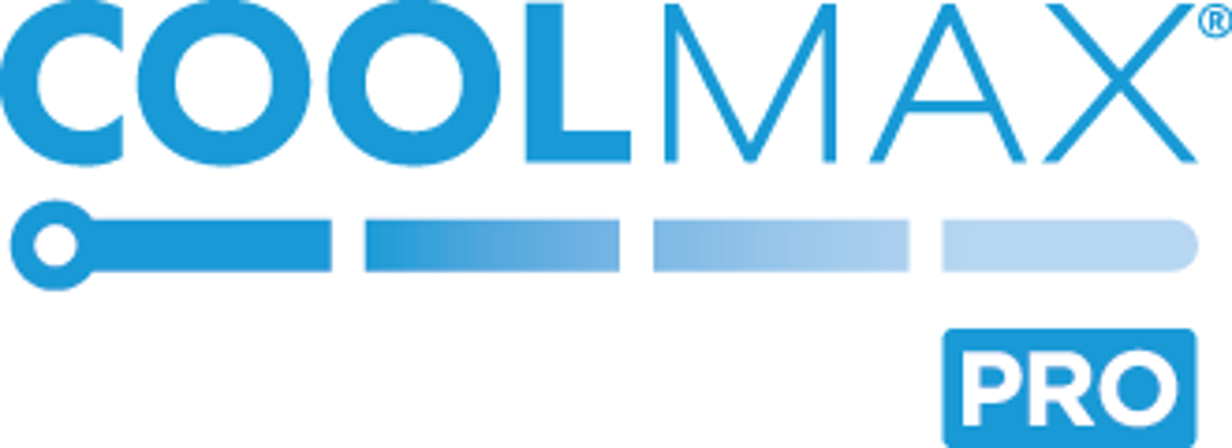In addition to optimising for comfort and freedom of movement, good moisture management enables maximum performance. During a workout and in everyday life, we are frequently faced with situations that force us to sweat: a sprint to the subway, a bike ride to work, or even a sunny workspace at the office…
Humans are naturally homoeothermic creatures, meaning that they are constantly warm. Heat generated by the body must be emitted just to maintain a healthy body temperature of 37°C, a need that accounts for the absorption of heat from surrounding air. This relationship between emission and absorption is essential for basic comfort and extending our limits of endurance. Through emitting heat, the body is able to retain valuable energy vital for the actual activity or exercise.
By increasing the rate of metabolic processes in the body, physical activity produces heat as a by-product. If the body is no longer able to maintain a constant body temperature through its own heat transfer system, it begins to sweat. As sweat evaporates from the skin, this transfer of heat induces a net cooling effect on the body.
It’s vital therefore that any clothing that is immediately in contact with the skin also allows for sweating. For instance, when wearing a fully waterproof piece of clothing, evaporation is not possible. Instead, water vapor condenses between the skin and fabric before trickling down the skin in liquid form. The wet fabric against the skin will force the body to experience uncontrolled heat loss, which can lead to decreased performance. To prevent this, sportswear fabrics must be “breathable” – so that sweat can wick to the surface yarn and evaporate. In clothing terminology, the term “breathability” is often used when referring to the water vapor permeability of a material.
Low vs. high activity – when will a particular fabric work?
Even when you’re engaging in low-intensity physical activities, this “breathability” component is still relevant. The primary factors influencing this are the size of the pores of the material through which the water vapor is transferred, combined with the thickness of the fabric.
Still, “Breathability” is not merely a question of the material used, but also the strength of the thread and the design of the entire yarn. For example, fabrics made of 100% natural fiber are suitable for clothes used in everyday activities only. These include, for example, plant fibers such as cotton or linen. They absorb moisture very well, so that with light sweating, the body can keep its energy balance in equilibrium and prevent dampness.
Heavy perspiration results in an increased amount of moisture, which can no longer be absorbed by the fibers. Instead, textiles worn close to the skin focus on mechanisms of “adsorption and migration” – the accumulation and removal of water vapor on and along the fibers. Here, sweat moves to the outer layer of the fabric where it can dissipate into the ambient air.
Different fabric types can be used to achieve this. One way is for the fabric to undergo chemical treatment, which increases the speed of moisture transfer to the outer threads. This procedure is applicable to a wide variety of materials but the chemical washes out over the course of time, rendering the yarn cavity ineffective.
An alternative is to ensure that the design of the fiber lattice guarantees good moisture transfer. This method is based on the physical effect of capillarity, which is characterized by liquids adhering to the surface while being transported by intermolecular forces. In this process, spaces between the fibers in the yarn, or spaces between the yarns in the textile, act as capillaries with suction effect. Many synthetic fibers are able to simulate this effect.
Our new Freeletics Essentials summer products in detail
In order to prepare you for any kind of sweaty affair, our new products use materials manufactured using a yarn that induces effective moisture transportation. The mesh products from our summer collection include the COOLMAX® EXTREME technology. With other products, materials were processed with drirelease® technology.
drirelease® fabrics always keep you cool and dry during your workout. Highly functional material channels sweat away from the skin and, through intense evaporation activity, ensures a comfortable fit, even during exercise. The drirelease® materials achieve one of the highest industry standards for dryness because they transfer moisture up to four times faster than 100% cotton.
The application of different fiber types ensures the sustained performance of the material. The drirelease® material used consists of a patented blend of 85% hydrophobic (water repellent) and 15% hydrophilic (water absorbing) fibers.
We also add FreshGuard to the material to prevent the build up of unpleasant odors. Rapid adsorption and release of moisture to the ambient air also prevents the growth of bacterial odors.
Facts at a glance:
- Rapid moisture absorption
- 4 x faster drying than 100% cotton
- FreshGuard prevents odor buildup
- Stable in shape
- Easy-care
- Long-lasting functionality
- Wrinkle-free

While drirelease® technology is based on a certain yarn and surface design, the excellent “breathability” of the COOLMAX® EXTREME technology is due to the fiber structure itself. COOLMAX® PRO fibers are specially designed profile fibers made of polyester. Their non-cylindric cross section has a larger fiber surface and thus forms a transport system that quickly moves moisture away from the body. The larger surface area allows for quicker evaporation than “conventional” fibers with a circular cross section and results in quick drying. In addition, this inhibits the growth of microorganisms, which prevents odors.
Facts at a glance:
- Rapid moisture absorption
- High air permeability
- Fast drying
- No odors
- Stable in shape
- Easy-care
- Long-lasting functionality
- Wrinkle-free
COOLMAX® is a trademark of INVISTA:

For its collections Urban Grounds and MAX.PRFRMNCE, Freeletics Essentials selectively opts for specifically functional textiles that promote moisture transfer in order to meet the diverse demands of everyday life and sports.